On Rochets, Saroziums and Almutiums
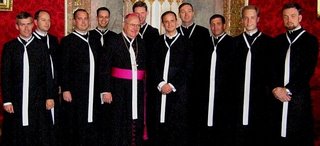
This happy group shows members of Stift Klosterneuburg [Stift means an ancient monastic 'endowment' or 'foundation'], with their Provost in the centre (who has the privilege of dressing as a bishop). The most striking element of the habit is the long white ribbon, which is called a sarozium. The word derives from sacrum rochettum (sacred rochet), a garment today reserved for prelates and some chapters of canons, which in its full form resembles a long surplice with tight-fitting sleeves. Here is Thomas à Kempis (of the Congregation of Windesheim) wearing his rochet:
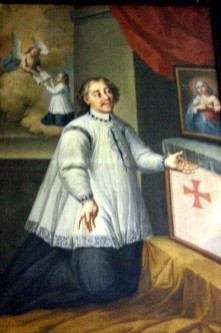
The solemnly professed Canons Regular of Stift Klosterneuburg wear full rochets at liturgical functions:

The canons originally wore the rochet all the time. At one stage in its development, the rochet looked a bit like an apron, as seen in this portrait of Andreas Mosmiles, a seventeenth century Provost of Stift Klosterneuburg: Or this unusual picture of St Anthony of Padua, who before joining the Franciscans was a Canon Regular of the Holy Cross of Coimbra:
Or this unusual picture of St Anthony of Padua, who before joining the Franciscans was a Canon Regular of the Holy Cross of Coimbra:

For practical reasons the rochet was reduced to the sarozium (and the cassock, originally white, became black), as demonstrated by this handy picture:
The sarozium is a reminder that the canon is dedicated to the service of God not only when he is in choir but wherever he is. Here is the Freench spiritual master, Raymond Jordan (d.1400), showing off his sarozium in a much later painting.
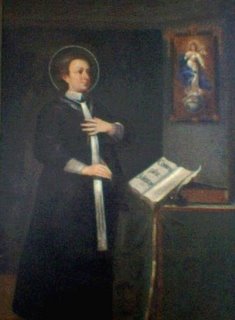
On solemnities the canons at Klosterneuburg wear a violet mozzetta over the rochet:
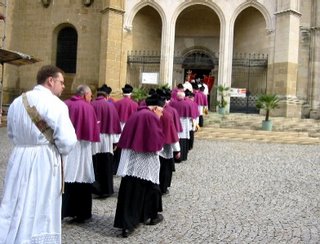 Previously they wore a fur cape with tassels called an almutium. This can often be seen in paintings of the Czech martyr, St John Nepomuk, who was thrown off a bridge for not divulging the secrets of the Confessional - see, for example, this lovely painting by Szymon Czechowicz:
Previously they wore a fur cape with tassels called an almutium. This can often be seen in paintings of the Czech martyr, St John Nepomuk, who was thrown off a bridge for not divulging the secrets of the Confessional - see, for example, this lovely painting by Szymon Czechowicz:
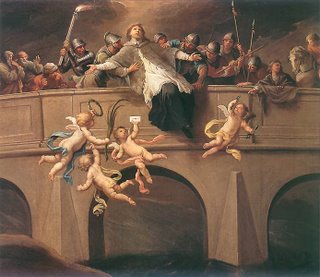




1 Comments:
What was the link between Thomas More and the Congregation especially regarding English Catholics flight.
Post a Comment
<< Home